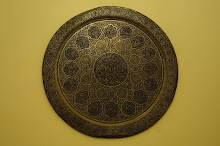 The Golden Century for silk, and its use globally, was between 1830 and 1930. It was during that period, in 1893, that one of the earliest silk factories in Lebanon, Maaser Beiteddine, was built.
The Golden Century for silk, and its use globally, was between 1830 and 1930. It was during that period, in 1893, that one of the earliest silk factories in Lebanon, Maaser Beiteddine, was built. The women of the villages were provided with mulberry trees where the silkworm grew, and were made responsible for the production of the fibre. They took care of the worms, including sensitive temperature and humidity control of the storage rooms, until they began to spin their cocoons.
The worms were then transported to the silk factory where they were killed in a process involving hot air, and the silk from the cocoons captured. The textile was shipped from Lebanon primarily to France and Italy.
The silk industry was a useful way for rural women in Lebanon to contribute significantly to the financial welfare of their households, while the men worked in the fields. The use of silk took a great downturn after the introduction of nylon by Dupont Chemical after the Second World War. The factory in Beiteddine, the town in Lebanon's Chouf region famous for its elegant and aristocratic palace, slowly went into disuse.
This was until Nino Azzi, the founder of ´Art Lounge´ - a gallery and cultural space in the Karantina area of Beirut - and Hala Khattar decided to transform Maaser Beiteddine into a gallery. Hala Khattar's family were the owners of the silk factory, and it made sense to extend Art Lounge to the serenity of the Chouf mountains.
A recent exhibit in the silk factory suitably celebrated "Woman in the Contemporary Arts", highlighting the work of thirty local and international artists.
















No comments:
Post a Comment